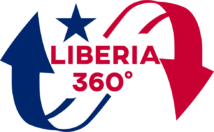About Liberia

Liberia, a sub-Saharan nation in West Africa, is densely forested and culturally rich, with a population of around 5 million. Natural resources include:
- Iron Ore
- Diamonds
- Timber
- Gold
- Natural Rubber
- Hydropower
with the revitalisation of the mining industry in particular after the 2003 end of the civil war. Liberia is one of the most ethnically diverse countries, and the textiles and quilting of Liberia are well known. The beautiful Sapo National Park is home to 150 species of mammal and 590 species of bird.
The wars heavily affected the infrastructure and society of Liberia, and it remains a ‘post-war nation’ with over 50% of the population living below the poverty line. Covid-19 has adversely affected the Liberian economy further as restrictions constrain the ‘informal market’ which provides 80% of employment.
Liberia Is Known For…
The government of Liberia is similar to that of the United States, where the president functions as head of state and government; the unitary and multi-party system however distinguish it from America.
The capital city of Liberia is Monrovia, which takes its name from the U.S. president James Monroe. The American Colonisation Society founded the city for newly freed slaves. The constitution of the population is mostly North American immigrants. It contains the only free port of West Africa. Many damaged buildings remain after the civil war.
Flag of Liberia
The flag of Liberia reflects the USA flag, with eleven horizontal stripes alternating red and white; however there is only one white star on a blue field in the upper left corner. The eleven stripes signify the signatories of the Liberian Declaration of Independence, with the colour red symbolising courage and white signifying moral excellence. The white star represents the first independent African republic, and the blue square represents the continent of Africa.
While over 20 tribal languages exist in Liberia, with the most common language being Kpelle, English remains the official language. There are five varieties of English – ‘Standard Liberian English’, Kru Pidgin English, Liberian Kreyol, Merico, and Caribbean English.
A Settlement of Free-born African Americans & Freed Slaves
Liberia as a colony of the United States and a place for the settlement of free-born African Americans and freed slaves. In 1847, Liberia declared its independence from the United States, although the United States only acknowledged this at the time of the American civil war in 1862. These settlers were the Americo-Liberians, who held the power. Indigenous people had little power – with some becoming slaves themselves.
The Americo-Liberians cultivated an essentially American culture, and nearly 100% of the voters were Americo-Liberians, despite the fact that they constituted one-fiftieth of the
Liberian population. The relationship with the natives was discriminatory in some cases and in other cases involved intermarriage, but typyfied by the attempt to ‘civilise’ the indigenous people. The ‘two-tier’ society, with the Americo-Liberians on the one hand and the indigenous populations on the other, only deepened with time, while the trend towards authoritarianism increased.
In 1980 Samuel Doe overthrew the Liberian government in a coup d’etat. While initially celebrated as a triumph for the Liberian people, Doe was oppressive, responding viciously to an attempted coup in 1985.
Liberia’s 1st Civil War
With the backing of the Ivory Coast, Burkina Faso, and Libya, Charles Taylor, a member of the Americo-Liberian government who, after a previous accusation of embezzlement, assembled the National Patriotic Front of Liberia. After invading Nimba County, the Liberian army retaliated on the area as well as the invaders. Before long, however, Taylor controlled the eastern part of Liberia.
Ethnic tensions were paramount, with the Khran sympathising with Doe’s government while the oppressed Gio and Mano sympathising with the NPFL. After Doe’s assassination in 1990 after refusing even when besieged to resign. For five years, Liberia found itself divided by warlords before reaching a peace agreement in 1996.
Liberia’s 2nd Civil War
The Second Liberian Civil War soon broke out, however, as Liberians United for Reconciliation and Democracy (LURD) resisted Taylor, leading to a three-way civil war between Taylor, LURD and the Movement for Democracy in Liberia.
A key factor in the peace that came in 2003 was the Women for Liberia, Mass Action for Peace, who were cross-religious. In October 2003 ECOWAS intervened to stop the rebel siege of Monrovia, exiling Charles Taylor to Nigeria until 2006, the time of his conviction of war crimes by the Hague, including the use of child soldiers.
The election of President Ellen Johnson-Sirleaf, the first female African head of state, led to a time of relative stability and economic progress, awarded the Nobel Peace Prize in 2011.
The current president, George Weah, is a former football player who, while accused of inciting violence in opponents, has so far maintained stability.
Ebola Epidemic
From 2014-15, an epidemic of ebola spread across West Africa, including Liberia. The poor healthcare system of Liberia, with only 50 doctors for a population of 4.3 million, meant that the virus spread quickly, and with a death rate of 70% it represented the largest challenge to public health at that time.
